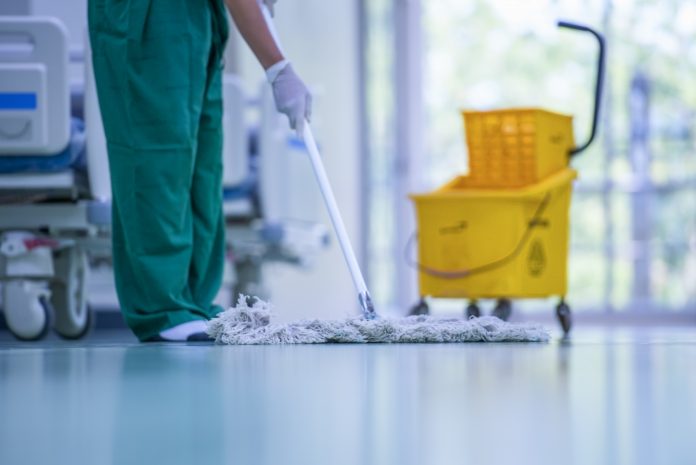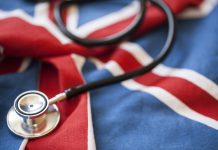John Brill from Nilfisk outlines how strategic cleaning regimes can support the critical need to ensure healthcare environments provide the highest standards of cleanliness in the fight to prevent healthcare-associated infections
The collective experience of the pandemic has reinforced the vital importance of cleanliness within home, work, and leisure settings.
The regularly heard advice to, for example, constantly sanitise multi-touch surfaces, reminds us of the need to be vigilant and continually guard against the potential for contamination and the spreading of viruses and infections as we go about our daily lives.
The importance of such an approach to cleanliness is magnified within the healthcare sector. Patients and staff need to trust that cleaning strategies, and their practical implementation, are a top priority for hospital and clinic sites and the busy hallways, patient and treatment rooms, laboratories and clean rooms and facilities that people use and congregate in.
In such settings, cleaning isn’t just business-critical, it’s life-critical. Healthcare-associated infections (HAIs) are the most frequent adverse event in healthcare delivery across the globe affecting hundreds of millions of patients every year. Such infections result in both significant mortality and financial losses for health systems, as well as being a cause of reputational damage to a service everyone needs to believe is safe.
According to a survey conducted by Nilfisk*, 95% of patients and visitors consider cleanliness in healthcare clinics and hospitals to be ‘very’ or ‘extremely’ important. While 10% of those admitted to a hospital have acquired a healthcare-associated infection.
The good news is that many of the infections that originate within a healthcare setting, and which go on to affect patients and staff, are preventable through a rigorous and strategic approach to cleaning. It can underpin an ambition to provide the highest cleanliness standards across healthcare estates through a combination of planning and the use of effective cleaning equipment technology that can deliver reliable results quickly and efficiently.
Cleaning challenges
It should also be recognised that there are several significant challenges which high performing cleaning regimes must overcome to deliver the standards required to prevent infection spread. These can include the need to clean large areas, the frequency of cleaning required, time pressures perhaps exacerbated by staff shortages, cost pressures, obstacles such as chairs, patient beds, and visitors, as well as having to work appropriately within noise-sensitive areas.
Looking at certain settings within a healthcare environment and recognising the characteristics that can contribute to potential dangers, will help identify how best to implement a successful and results-orientated cleaning regime across the most frequently used healthcare areas.
Priority areas
Hallways are the main thoroughfares within a healthcare setting. Patients, staff, and visitors pass through them multiple times in a day and, as such, dirt, dust, and pathogens can be collected on shoes and medical casters or stirred up into the air and be transported. It is clear that a clean hallway is the first line of defence against the spread of infections. Visible cleaning activity in these areas also helps to reassure patients and visitors that safety and cleanliness is a top priority for hospital and clinic management.
Helpful tips for hallways include disinfecting the floors and all high touch areas after cleaning. Pay attention to areas just inside doors, especially in the winter, when water, snow, dirt, and salt may be tracked in. Clean up spills immediately to avoid slip hazards and periodically undertake deep or restorative cleaning activity. It is also important to thoroughly document all cleaning procedures for future reference and never forget to clean and disinfect all cleaning equipment after every use.
Patient and treatment rooms are critical healthcare locations where the danger of a healthcare-associated infection can be even higher. Research has demonstrated the strong link between room cleanliness and healthcare-associated infections (HAIs) and is also linked to a patient’s overall experience of and satisfaction with the care they receive.
Echoing robust hallway cleaning strategies, patient and treatment rooms need to be attended to frequently to remove dirt, debris, and pathogens, have body or medical fluids removed as necessary and spills mopped immediately. Good practice around cleaning procedure documentation, periodic deep cleaning and constantly ensuring that equipment is cleaned and disinfected is essential.
Laboratories and cleanrooms lead the diagnostic services that the healthcare sector provides and as such requires the highest standards of cleaning care. Dust, bacteria, and other airborne contaminants can affect medical samples. This can potentially provide inaccurate results, as well as make staff sick. To prevent problems escalating, cleaning regimes need to cleanse and sanitise floors and all surfaces to remove dust and bacteria, as well as tackle sink areas and regularly clear away rubbish.
Finally, bathrooms are another important location that can contribute to the growth of germs that can pose a health risk. Regularly cleaned bathrooms not only minimise such risks they also (like clean hallways) help to bolster patient, staff, and visitor confidence that well-being strategies are prioritised and acted upon. Therefore, all mirrors and fixtures should be kept spotless, all floors cleaned frequently, spot cleaning activity should be encouraged, and deep cleaning planned to maintain high standards.
The role of effective and efficient cleaning equipment is essential in helping cleaning management strategies produce the best short and long-term results for busy and essential healthcare settings.
High powered vacuum and floorcare solutions support bacteria removal, and floor scrubbers feature one-pass cleaning that removes slipping hazards. Equipment solutions that provide long run-times, good ergonomics and easy handling can help deliver uninterrupted productivity that underpins the operational efficiency of cleaning teams. In addition, issues such as noise sensitivity can be overcome through low-noise equipment performance that will not disturb patients, staff, or visitors.
Solutions such as Nilfisk’s Liberty SC50 equipped with a UVGI module can disinfect surfaces using UV-C light, eliminating coronavirus and other pathogens. It allows for autonomous floor cleaning, which can optimise cleaning quality consistency by removing the element of human error (cleaning staff typically miss 15% of floor space), and free up time for labour-intensive tasks which need a human touch.
Now, more than ever, it is vital to deliver the very best standards of cleanliness within critical healthcare settings. On the front line in the battle to keep people healthy and safe, hospitals and clinics can implement cleaning strategies that combine both systematic planning and best in class cleaning equipment to help minimise the prevalence of healthcare-associated infections.
*Nilfisk 2019 study, Value of clean; BJA Education











